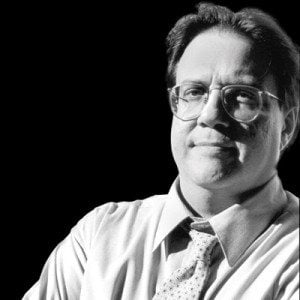The Dallas Morning Advertorial?

A version of this story ran in the October 2012 issue.
The Dallas Morning News, still the bellwether mainstream journalism entity in Texas, has decided to align its editorial muscle with the online-oriented, Dallas-based advertising firm Slingshot.
The newspaper and the ad firm are creating and co-managing what has been described as a “social media agency.” Known as Speakeasy, it will create digital ad campaigns for local and national businesses, in part by using newspaper stories that it distributes via Facebook and Twitter, or features on websites managed by the ad firm for clients.
Jim Moroney, publisher of the newspaper, will serve as chairman of Speakeasy. The founder of Slingshot will be the CEO. And though the partnership has been described as a joint operation, it’s clear that The Dallas Morning News will be the principal owner—and the one continually scrambling to find new ways to monetize its content. I used to work there, and I now teach inside The Belo Center for New Media at The University of Texas at Austin, supported by the newspaper’s parent company, A.H. Belo Corporation.
The arrangement is basically a sign of the national times come to Texas: publishers, from the heavyweights on down, are racing to connect with social media experts. Sometimes, as in Dallas, they are simply siphoning money from print budgets to form their own social media companies that unabashedly view content as a mash-up of news and advertising.
And they’re not just trying to figure out how to disseminate the news in faster-moving bursts on Twitter. The partnership in Dallas is predicated on exploring better ways to allow journalism, presumably in any multimedia form, to be used as an integral part of digital ad campaigns.
The newspaper’s mid-September story on the strategy says its social media agency “will also have access to the complete archives of The News, allowing clients to post stories related to their products and services on their own sites.” In other words, the ad agency will offer the journalistic content of the newspaper to its clients. The clients, in turn, can use the newspaper’s stories on their own websites and in their own social media channels.
It’s one of the buzzy new mass-communications mantras sweeping the 2.0 media landscape, whereby the old journalism boundaries between editorial and advertising are increasingly blurred, and some publishers talk unapologetically about “content marketing.” Defenders of the new strategy say the approach puts a smoother, more believable face on the ubiquitous “advertorials” that sometimes consume whole chunks of magazines like Texas Monthly. Now, instead of clients paying publications for an advertorial that’s clearly marked as an advertorial, companies can re-publish works of bylined journalism on their sites. One Speakeasy executive described it as a “softer” sell than an advertorial.
Some people in North Texas are raising red flags. Tim Rogers, editor of D Magazine (over the last several years he has done the best, most consistent coverage of the media in Dallas), wonders whether newspaper editors will be tempted to start assigning stories that advertisers would consider appropriate for marketing purposes.
Morning News executives insist there’s no potential conflict, that the newspaper’s creation of a social media ad agency is, in effect, just a continuation of what the paper has always done. For example, the newspaper may allow stories from its business section to be used in corporate newsletters. The social media agency, the execs say, simply provides a digitally groomed way to do the same thing. And, without question, it’s a way to make up for the dwindling revenues from print advertising.
In its own story announcing the move, Moroney said the Morning News is a “tremendous repository of great content,” and that the social media/advertising/journalism initiative will increase the newspaper’s reputation as “an innovator in the newspaper industry.”
The Morning News promises to retain editorial independence, and that its stories will not be selectively edited by businesses.
But does having works of journalism on a company’s website—and coursing through its social media streams—imply a tacit endorsement from the newspaper? Is the result a “softer sell” because it seems to come with the independent vetting that news outlets should always provide? Time will tell.


